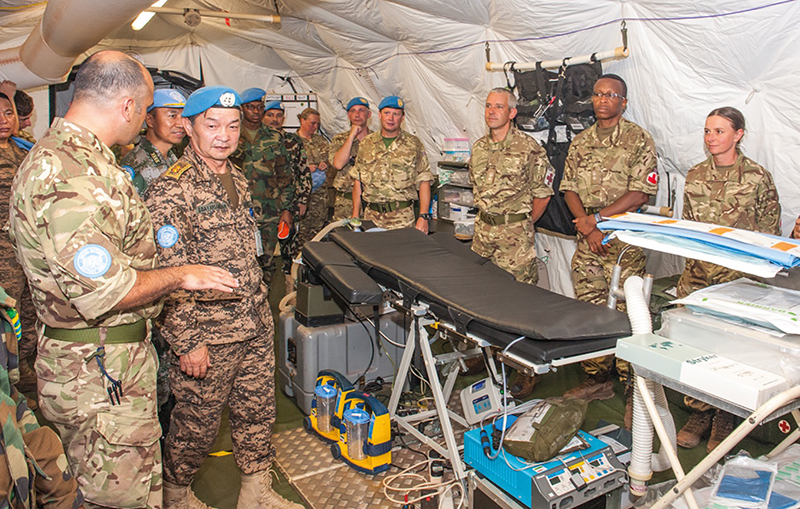Author: SSgt Simon Durdle, Defence Medical Services, Operation Trenton
The British military is currently deployed to the United Nations Mission in South Sudan (UNMISS), largely unknown to the UK population.
Supporting the United Nations humanitarian relief effort, the deployment has brought new challenges to the imaging needs of the Defence Medical Services (DMS). The deployed imaging department is currently comprised of two radiographers (regular), and one radiologist (reservist) from the British Army.
This adequately meets the needs of the UK’s Role 2 hospital, with patients coming from the UN, other troop contributing countries and UN civilian staff, as well as our own military personnel who are mainly from the engineering task force.
Referrals range from trauma to tropical diseases. The imaging department provides a 24/7 rota and is equipped with CERETOM CT, DRagon plain film x-ray, Sonosite M-Turbo ultrasound, and has a satellite networking system for a deployed RIS and archiving of images to the Centre for Defence Imaging, Birmingham, with further advancements of telemedicine in the pipeline.
It is difficult to overstate how austere the conditions are for an imaging department. The facility is a deployable rapid assembly shelter, basically a tented set-up, a few square metres in size. The temperature is the obvious challenge in a tropical country, with overworked air conditioning systems struggling to maintain temperatures to ensure operation of the imaging department’s equipment.
Furthermore, South Sudan is currently in its wet season. Here, the rain is often, and dramatic. A sudden downpour requires the immediate need to check the external integrity of the imaging department and its drainage ditches - which require daily/weekly ‘spade and shovel’ maintenance by the radiographers, watched and given verbal encouragement by the radiologist!
The patient flow has been comparatively low compared to the tempo that was seen in Camp Bastion in Afghanistan. This has allowed for the deployed personnel to ‘find their feet’ with the new systems and equipment.
The camp itself is located near Bentiu, which is a two hour helicopter trip from the nearest logistics hub. Highlighting the rationale for the unconventional deployment of a CT scanner to a UK Role 2 medical facility, it ensures that the UK maintains the timelines within its operational patient care pathway, with more advanced imaging not available in theatre, being sourced in neighbouring Kenya or Uganda. Moreover, the wet season (making road moves impossible) and complex UN requirements have made the supply and support for the medical facility difficult, with a need to self-sustain the department for several months before resupply.
The slow patient numbers pose a risk to de-skilling of the clinicians throughout the whole medical complex. To minimise the risk, there is a regime of moulages and CPD sessions aimed at all areas of healthcare. These allow the clinicians to not only reduce skill fade, but also ensure that the clinicians can concentrate on theatre specific needs.
Although the deployment is significantly different to the trauma needs of battlefield operations, it is reassuring to note that the DMS has proven that it is fully capable of deploying to an austere environment, and successfully deliver a fully operational imaging facility.
Acknowledgements
With grateful thanks to patients and colleagues at the Role 2 Facility, Bentiu. Author: SSgt Simon Durdle (Radiographer). Photography: Lt Col David Bailey (Radiologist).
